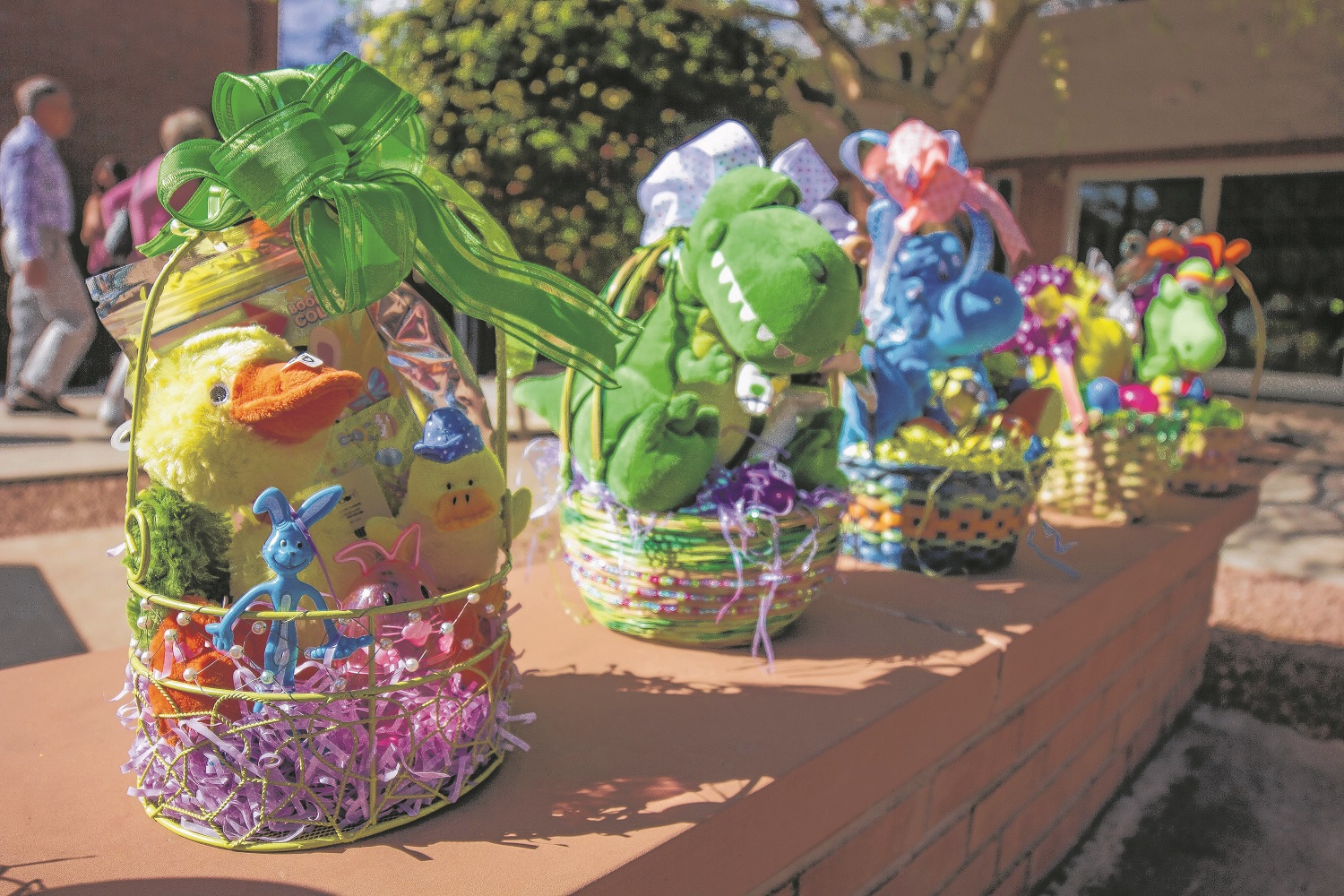
By Deborah Hilcove
Imagine your kitchen counters, your dining room table—every surface—covered with pink and blue bunnies, chic black-and-white zebras and googly eyed giraffes, with team-logo basketballs, princess tiaras, zany sunglasses, magic wands, even pixie dust.
Add brightly colored baskets, spools of rainbow-hued ribbons, Easter grass spilling everywhere and tons of goodwill, mixed with hundreds of volunteer hours and lots of laughter.
That gives you an idea of the “Easter explosion” occurring every year at the home of Nancy Eilertsen, director of the East Valley Wildlife Rehabilitation, where volunteers like Lisa Limbert, both assistant director and head of education and chief Bunny Lady, busily create a glorious profusion of fantasy baskets.
For the past 20 years, this has been a collaborative project of the Outreach Committee of the Episcopal Church of the Epiphany-Tempe. EVWR volunteers create and sell these baskets at nominal prices to parishioners on a Sunday before Easter, which is March 27 this year.
June Crane, outreach chairman, says many of the baskets are destined for the children of families and friends, but a greater number are bought and donated to the East Valley Child Crisis Center in Mesa.
“It’s a win-win situation,” agrees Eilertsen. “People help two organizations with one shot.”
EVCCC provides a safe environment for children who are victims of abuse and neglect, but it also enables counseling and education to parents in the hope that children can be returned home. During their operational 30 years, the organization has sheltered more than 11,000 children. The agency serves single- and two-parent families of all religious beliefs, ethnicities and sexual orientations, dedicated to prevent child abuse and to advocate and support vulnerable children in crisis.
But EVCCC isn’t the only facility providing security and refuge. Founded in 1989, East Valley Wildlife is a nonprofit organization of in-home wildlife volunteers who care for small injured and orphaned wild mammals, such as songbirds, quail, waterbirds and waterfowl, as well as small mammals like bunnies and squirrels.
Eilertsen shares several tips for animal samaritans. “It’s a myth,” she says, “that touching a baby animal will make the parent reject it.”
She continues, noting that if a baby bird is on the ground and doesn’t move as you approach, it needs to be rescued. If an orphaned baby songbird is warm, alert and opening its mouth for food, chop up a hard-boiled egg and feed it small pieces.
Never squirt water down a bird’s throat or force feed it, since that can cause aspiration and even death. Instead, place a drop of water on its beak and let the bird swallow.
“Stress is the number one killer of wildlife,” she says. Keep all rescued animals in a warm, dark, secure place, away from pets and household noise. Put water in a very small, shallow dish with pebbles so the animal doesn’t drown.
And contact East Valley Wildlife so the animal can be placed with a trained rehabber.
Because baby bunnies, chicks and ducklings are so adorable—and greeting cards have made them symbolic of spring—many people give them as Easter gifts. Although they truly are adorable, their cuteness may soon wear off, and these little creatures become abandoned and orphaned.
That’s why the wildlife organization stresses giving stuffed animals as presents—and that’s the underlying purpose of their Easter basket project.
More rehabbing tips are available at www.eastvalleywildlife.org. Further information can be found at www.episcopalchurch.org/parish/church-epiphany-tempe-az and www.childcrisisaz.org

